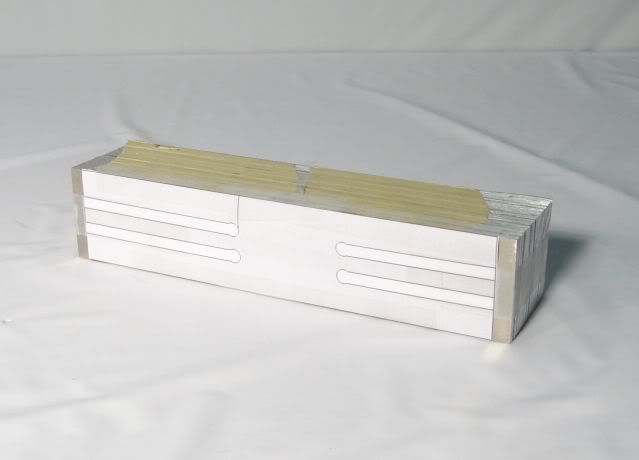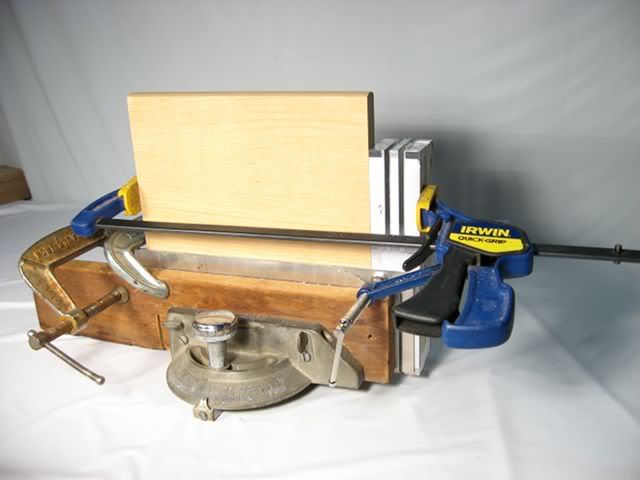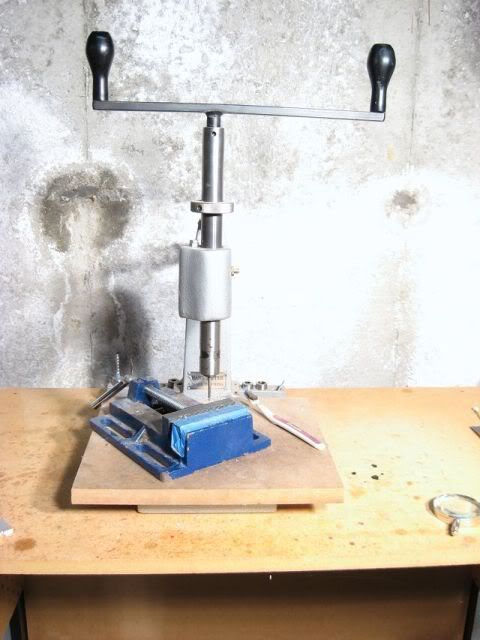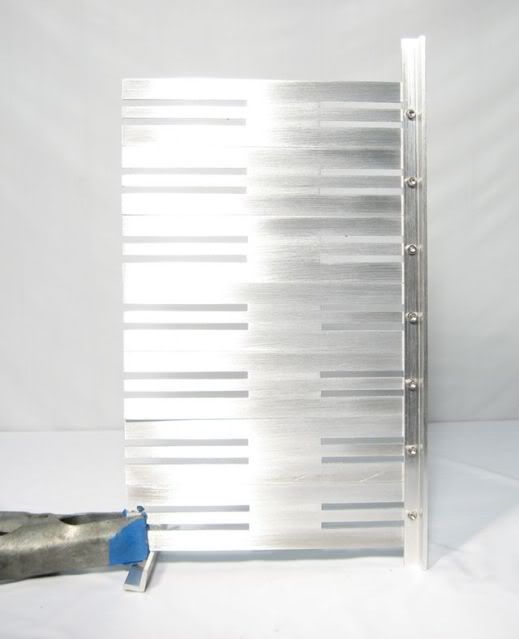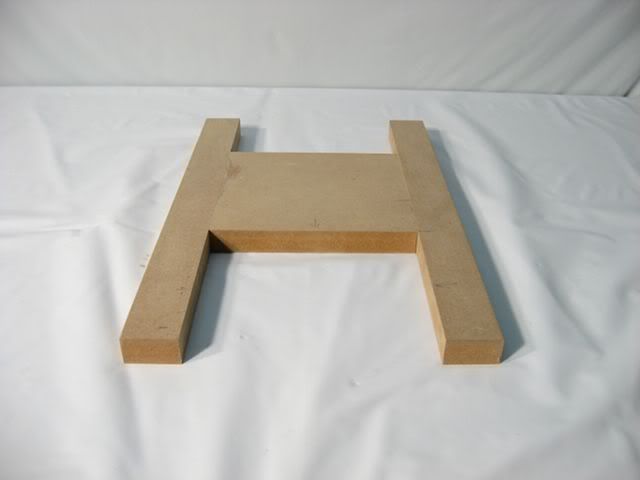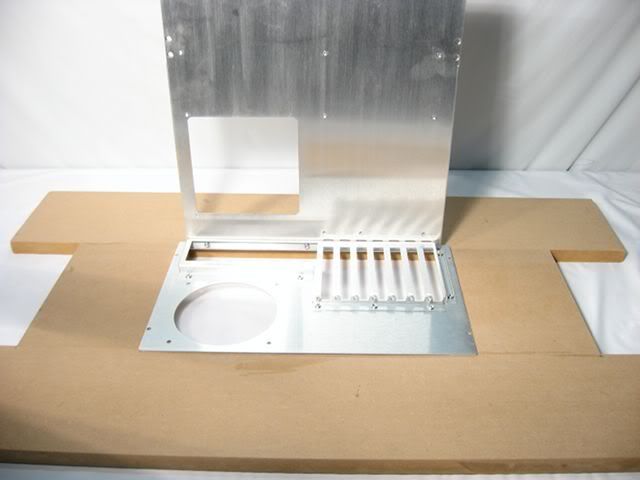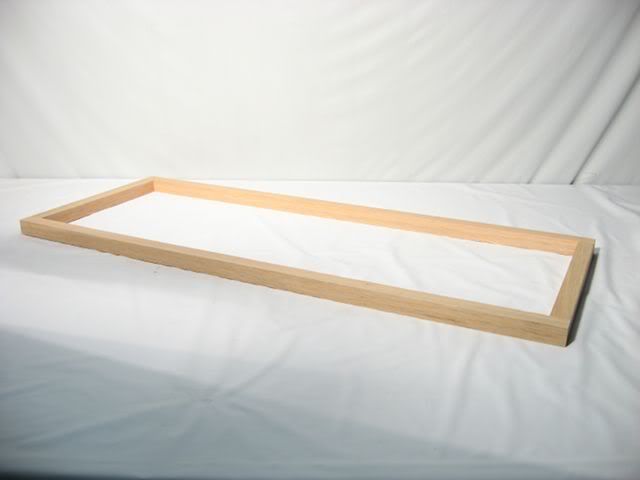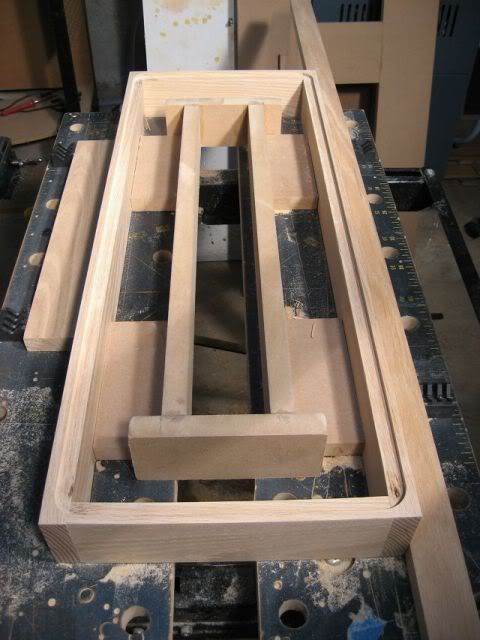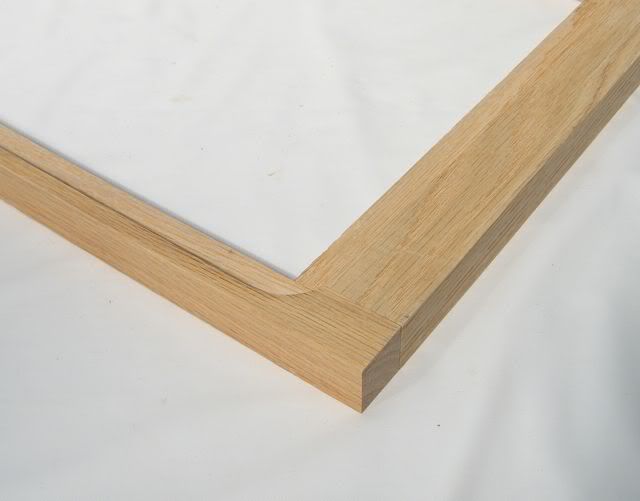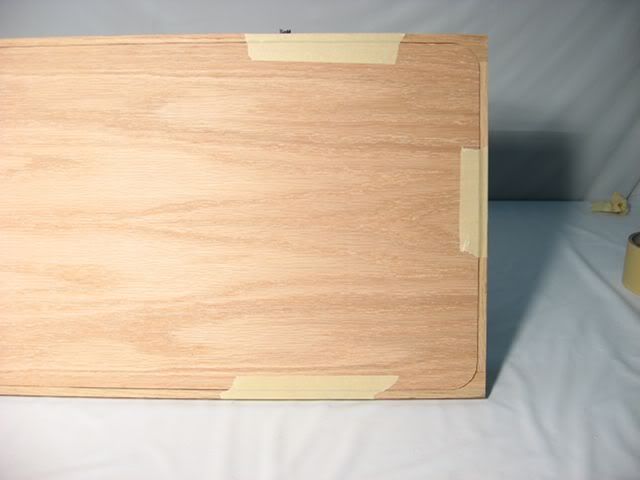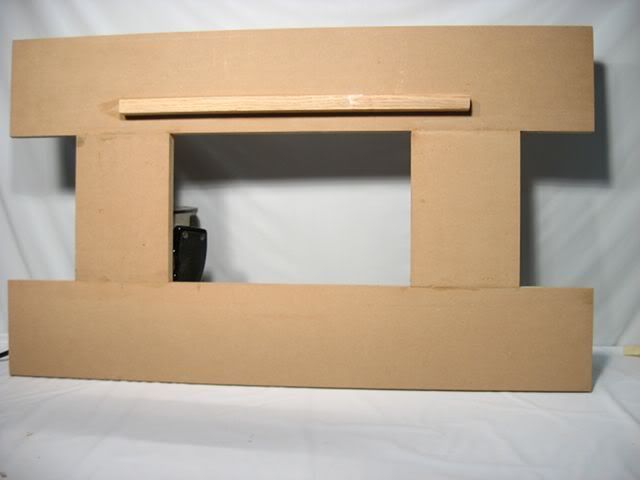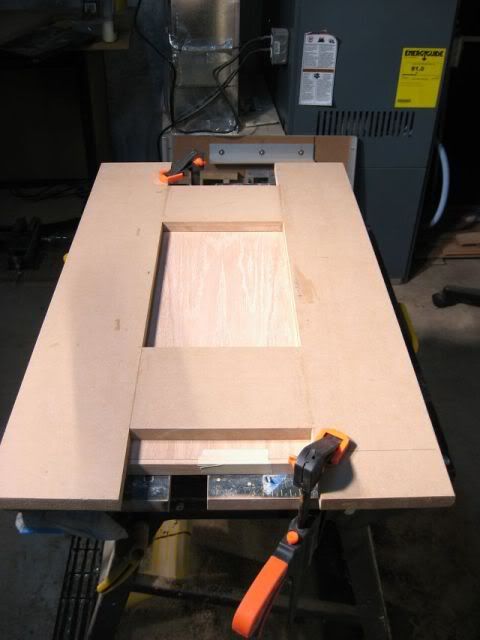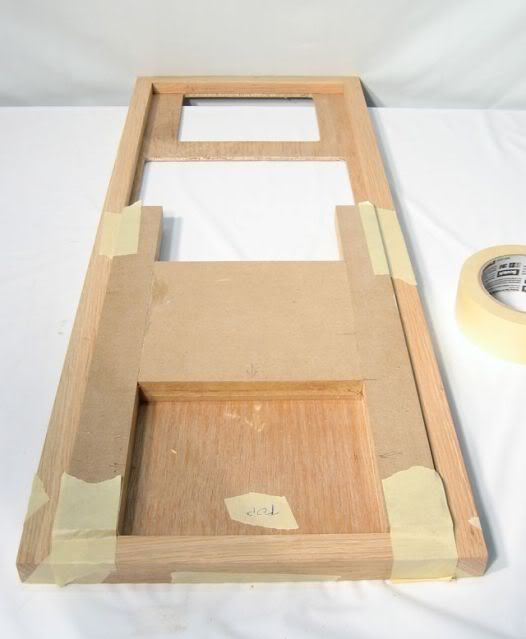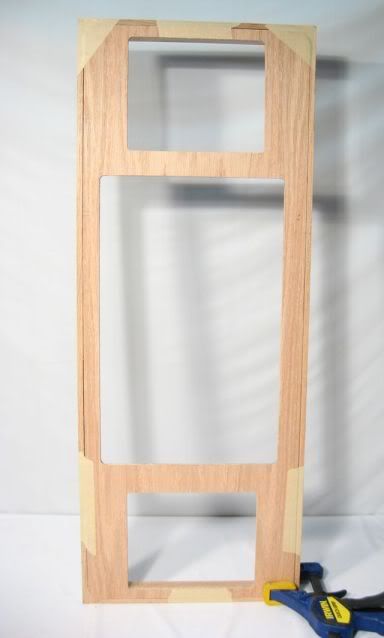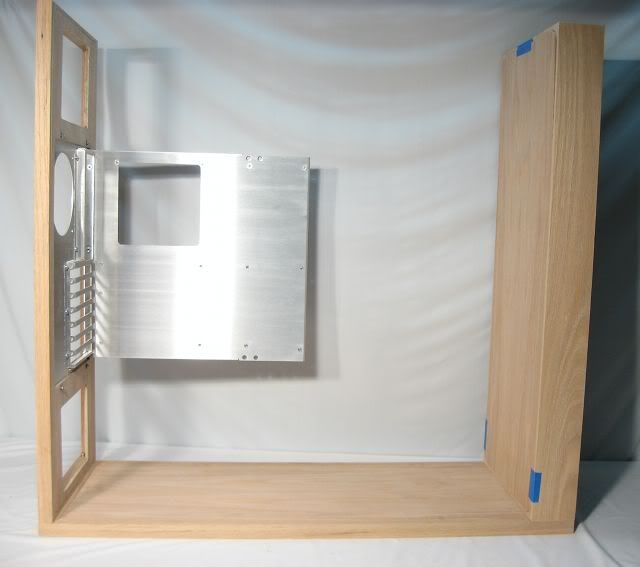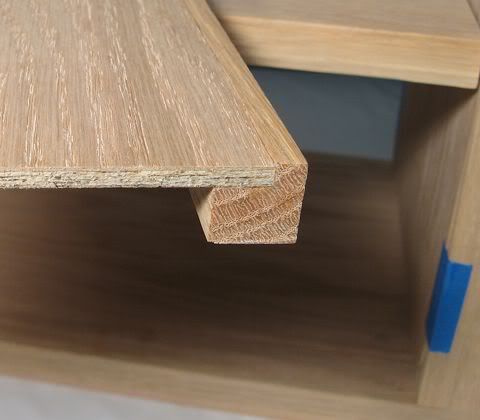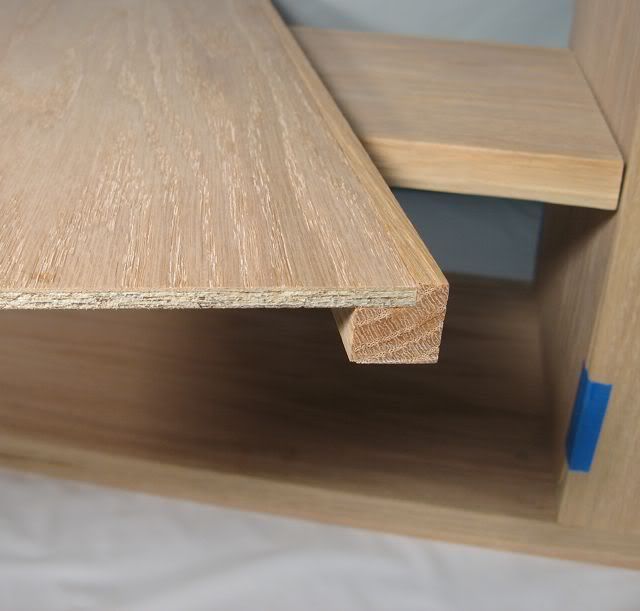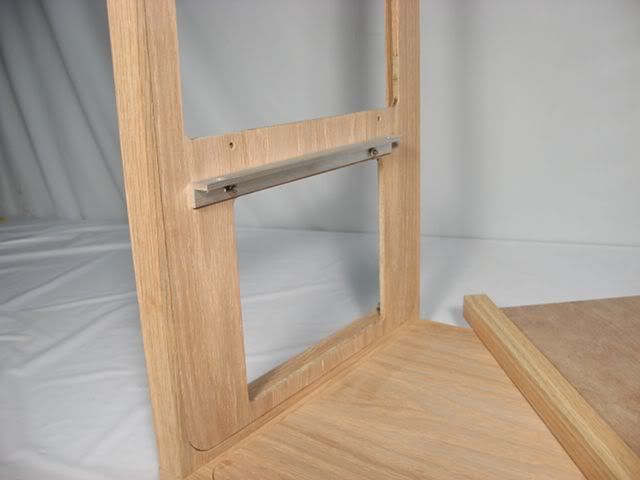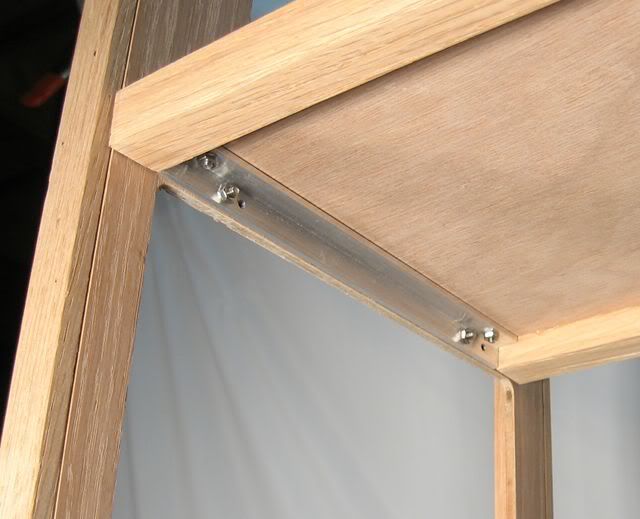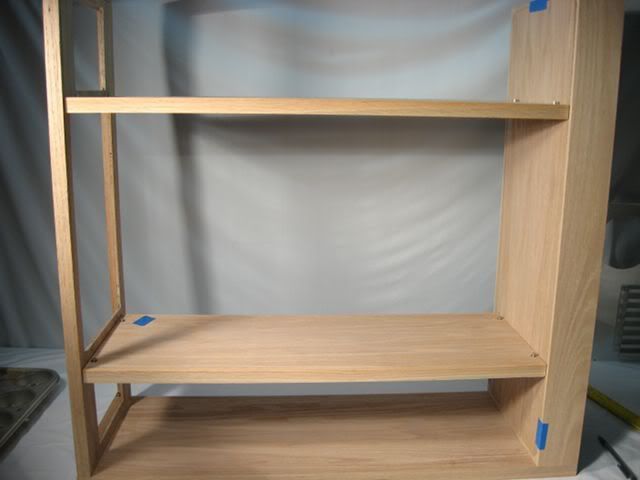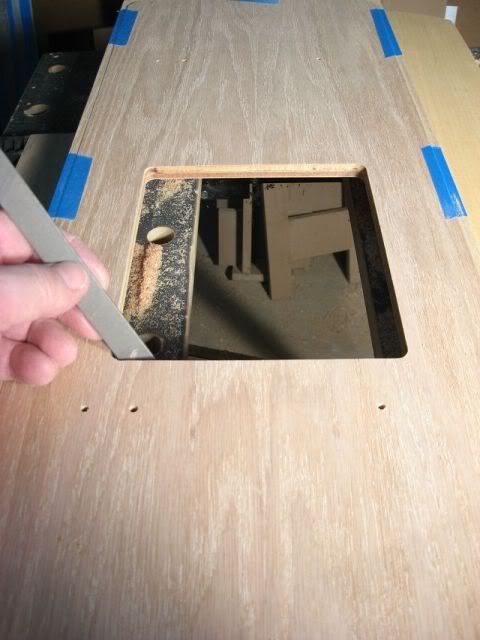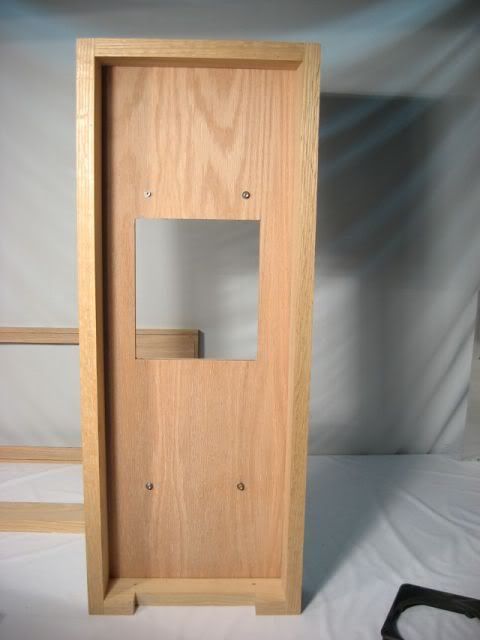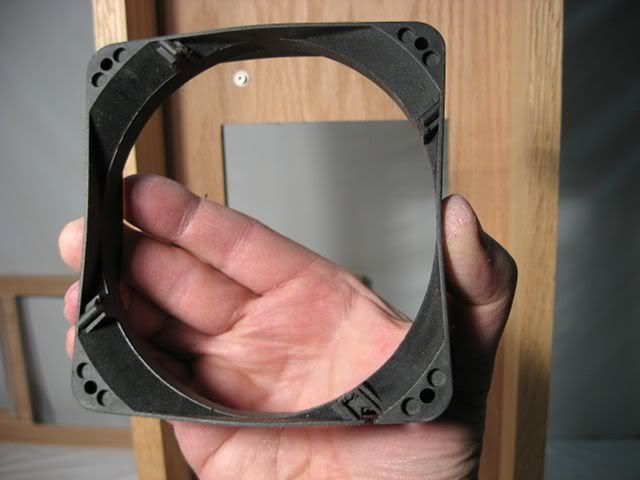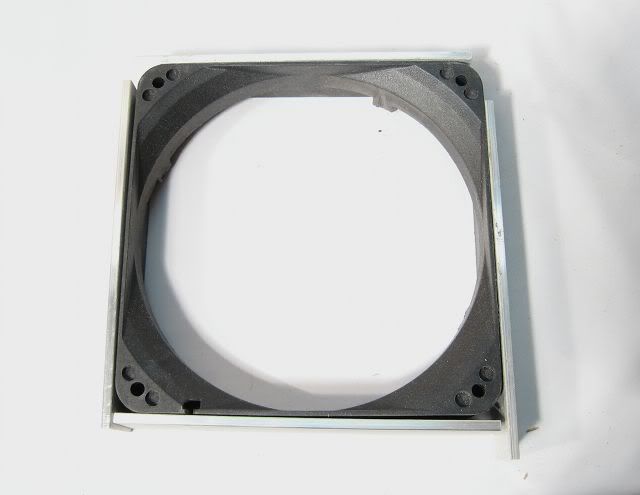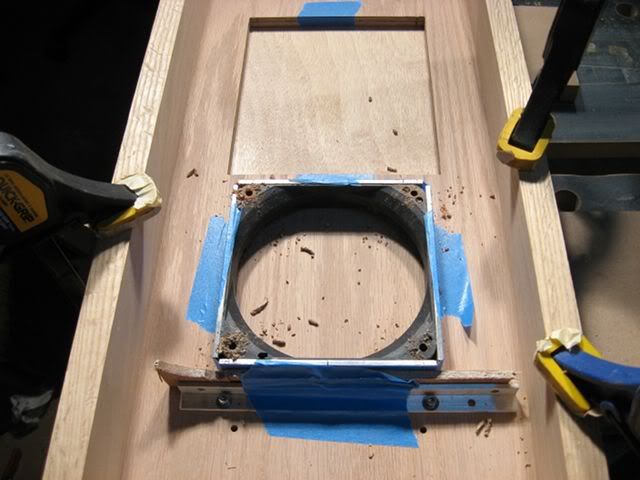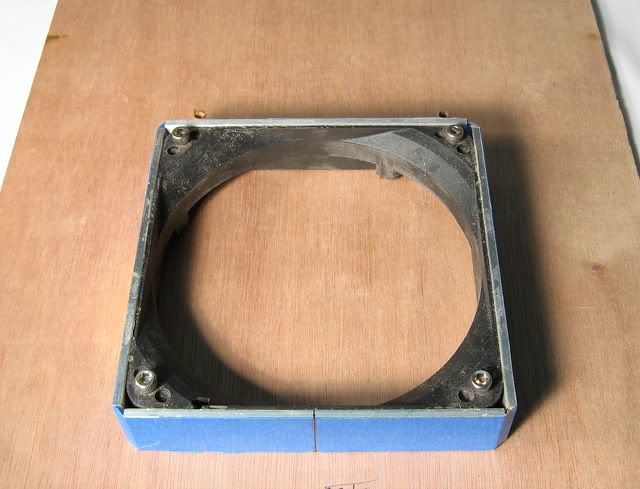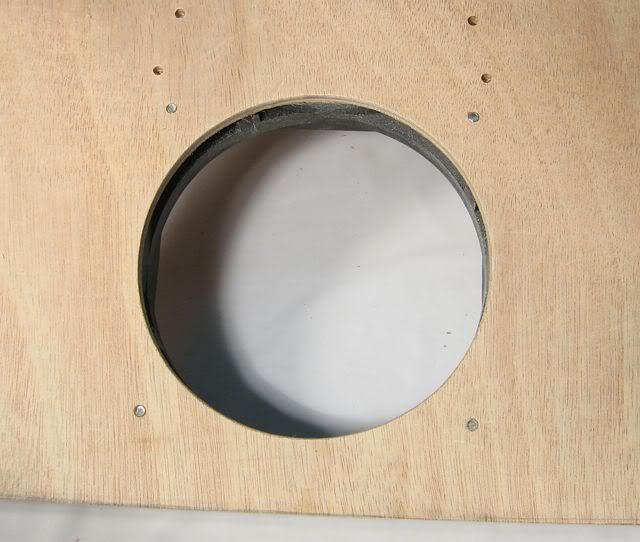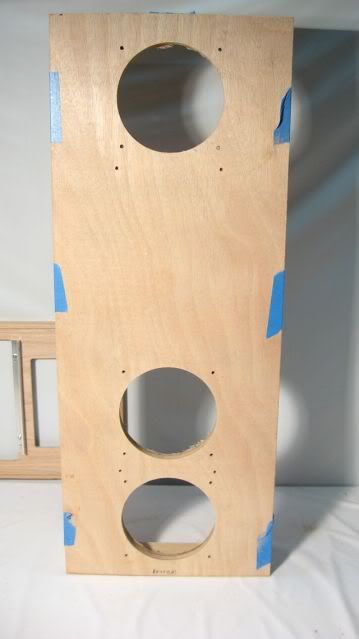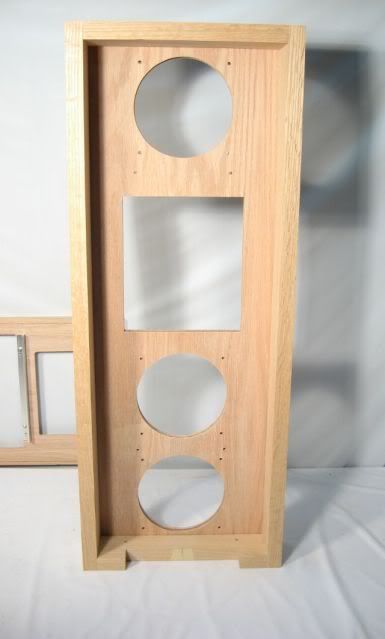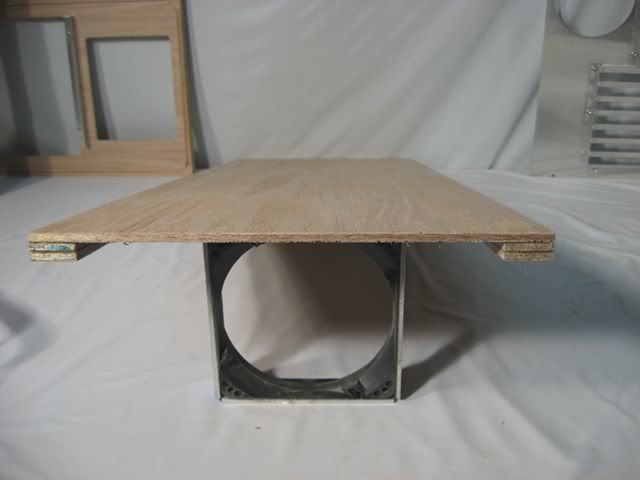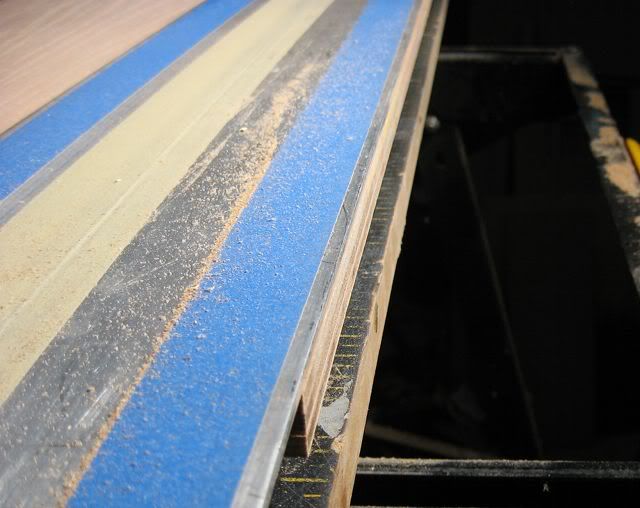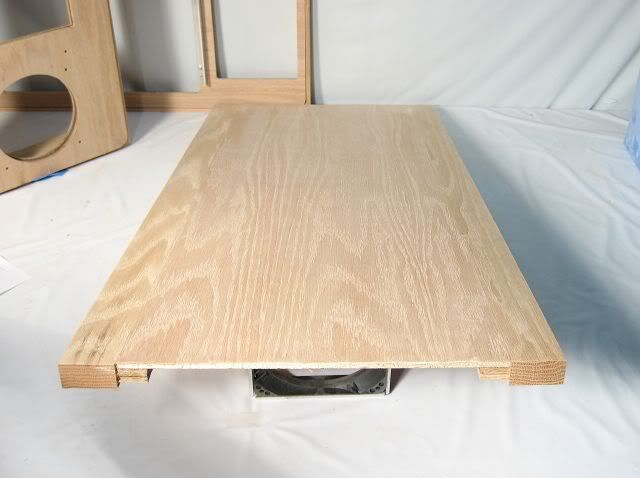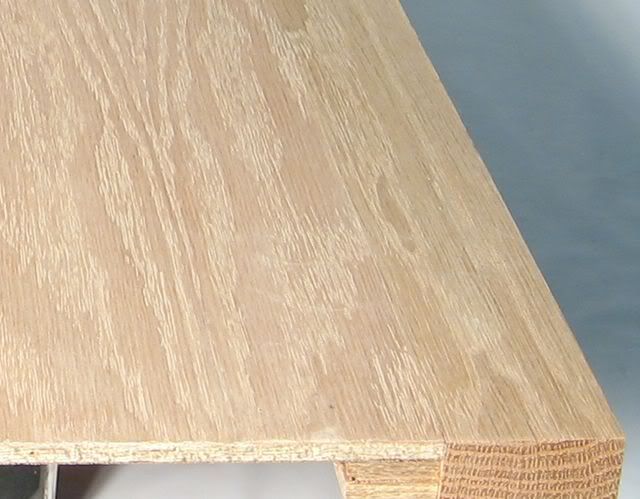Final pics are here.
I'm very fortunate to have been commissioned to build a large wooden tower case, to be used to hold a large water cooled rig. The design of the case was born from Mick64's 'Case Design for Liquid Cooling' thread over on XtremeSystems Forums. I'm a wood worker, not a metal worker, so I had to compromise that design somewhat in order for me to be able to build it. (But I also like to think I've made some small improvements over Mick64's initial design.)
The case will be constructed in such a way that it could be shipped "flat", but yet still be easily assembled when the case arrives at its final destination. To reduce the weight of the case, it will be made from hardwood trimmed 1/4-inch oak veneer plywood.

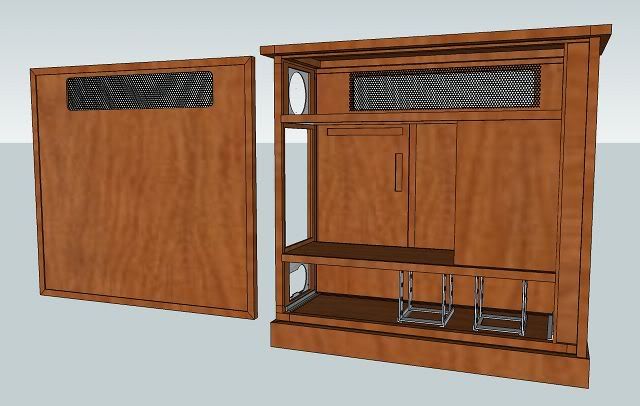
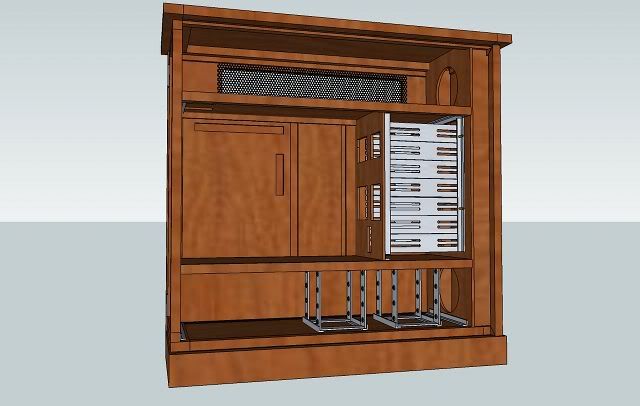
The case is designed to contain an EATX motherboard, seven 5.25-inch drives and eight 3.5-inch hard drives. Two 120.4 radiators will eventually be mounted in the top chamber:
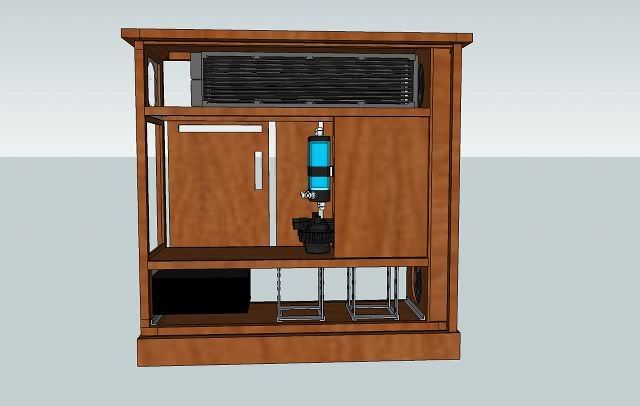
For wire routing/hiding, there's a "false back" between the mother board tray and the side panel:
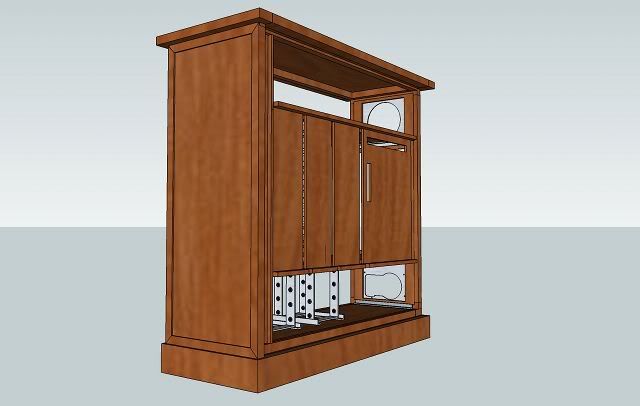
The front fascia/panel is removable (although not on a hinge). Each horizontal "chamber" in the case is fed and exhausted by a 120mm fan.
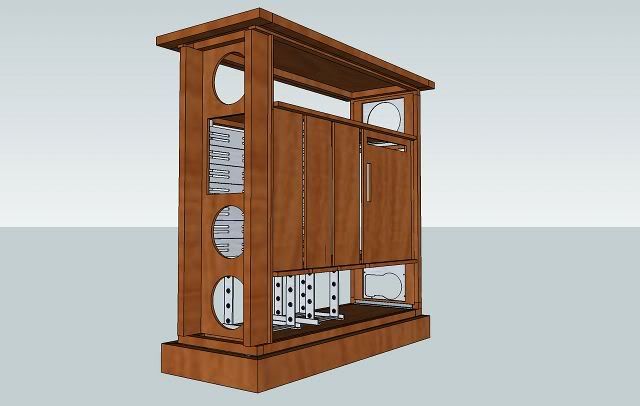
Fresh air is supplied to the front fans via a bottom-fed, built-in air duct.
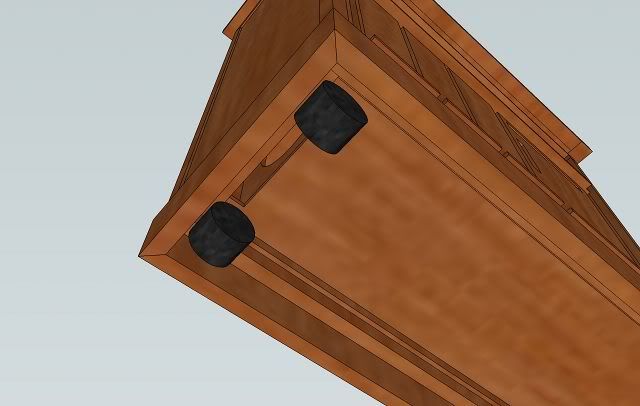
The case will stained black throughout:
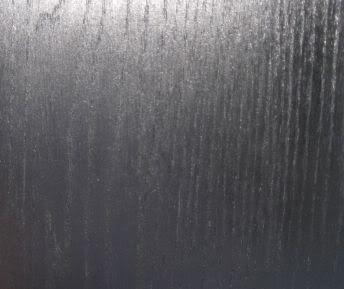
That pretty much wraps-up "the design tour."
The first order of business is to fabricate the hard drive cages from 1/8-inch aluminum flat bar:
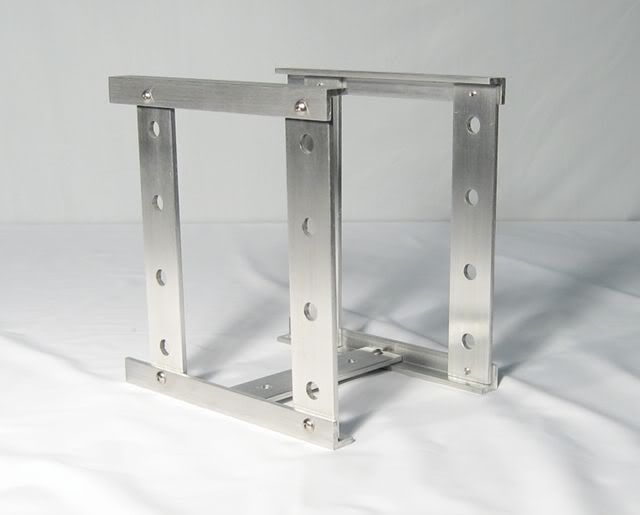
The drives are suspended in soft rubber grommets:
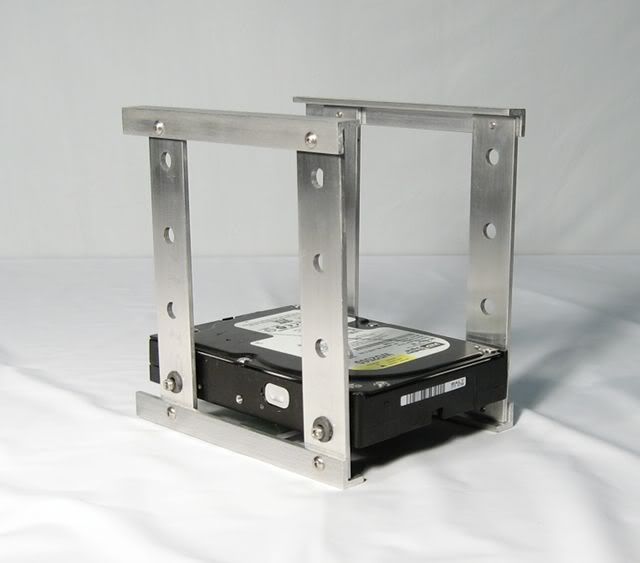
I'm very fortunate to have been commissioned to build a large wooden tower case, to be used to hold a large water cooled rig. The design of the case was born from Mick64's 'Case Design for Liquid Cooling' thread over on XtremeSystems Forums. I'm a wood worker, not a metal worker, so I had to compromise that design somewhat in order for me to be able to build it. (But I also like to think I've made some small improvements over Mick64's initial design.)
The case will be constructed in such a way that it could be shipped "flat", but yet still be easily assembled when the case arrives at its final destination. To reduce the weight of the case, it will be made from hardwood trimmed 1/4-inch oak veneer plywood.



The case is designed to contain an EATX motherboard, seven 5.25-inch drives and eight 3.5-inch hard drives. Two 120.4 radiators will eventually be mounted in the top chamber:

For wire routing/hiding, there's a "false back" between the mother board tray and the side panel:

The front fascia/panel is removable (although not on a hinge). Each horizontal "chamber" in the case is fed and exhausted by a 120mm fan.

Fresh air is supplied to the front fans via a bottom-fed, built-in air duct.

The case will stained black throughout:

That pretty much wraps-up "the design tour."
The first order of business is to fabricate the hard drive cages from 1/8-inch aluminum flat bar:

The drives are suspended in soft rubber grommets:

Last edited:
![[H]ard|Forum](/styles/hardforum/xenforo/logo_dark.png)
